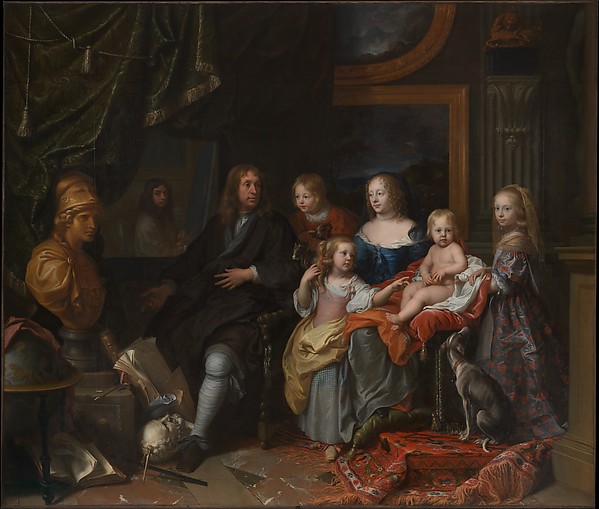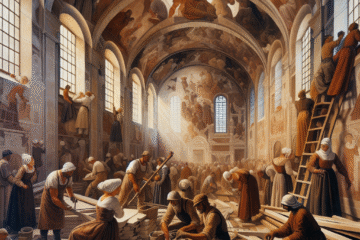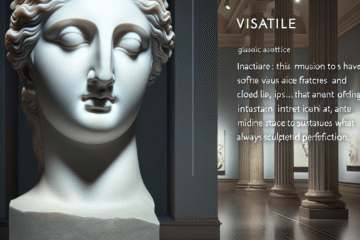
“
It is in your moments of decision that your destiny is shaped.
”
— Tony Robbins
The Celestial Brush: How Astronomy Shaped Sacred Indian Miniatures
Introduction: A Universe on Canvas
In the rich continuum of Indian visual culture, the miniature paintings from the Mughal and Rajput courts captivate with their vivid colors, intricate detail, and narrative power. Yet beyond their surface beauty, these works often encoded a deeper cosmological language. Astronomy and astrology – two distinct but intertwined sciences in ancient India – provided a metaphysical framework within which artists situated their compositions. From planetary deities to zodiacal symbolism, celestial ideas not only influenced subject matter but also had a profound impact on artistic form, sacred timing, and symbolic structure.
1. Vedic Cosmology and the Birth of Astral Symbolism
The earliest Indian artistic sensibilities were shaped by Vedic cosmology, a worldview that saw the universe as a divine, ordered system of planetary deities (Navagrahas) and cosmic cycles (yugas). In texts like the Rigveda and later the Surya Siddhanta, the heavens were more than just backdrops—they were dynamic participants in earthly affairs. This abstract relationship found its way into temple art long before painting became a dominant medium, with architectural features tied to planetary positions. Miniature painting inherited this astral lexicon, embedding celestial references in composition and iconography from its very beginning.
2. Mughal Observatories and the Art of Time
When the Mughal emperors arrived in India with their Persianate traditions and scientific leanings, astronomy took a new turn. The courts of Akbar, Jahangir, and Shah Jahan were home to sophisticated observatories and scholars of both Islamic and Indian astronomy. Notably, Emperor Humayun established an astronomical center influenced by Persian astrologers, and later, Jai Singh II would build Jantar Mantars across the subcontinent in the 18th century. These engagements were mirrored in paintings: court scenes often took place under celestial vaults painted in minute detail, and artists used planetary deities to determine propitious moments or to convey destiny. The discipline of jyotish (astrology) directly influenced portraiture, with planetary alignments suggesting the soul’s karma.
3. Rajput Reverence: Mapping the Divine Cosmos
In contrast to the Mughal penchant for observational astronomy, Rajput miniature painting—especially in schools of Mewar, Marwar, and Kangra—embraced more symbolic and devotional uses of the celestial. The sky in these paintings wasn’t just spatial; it was sacred. Stars, moons, and planets appeared as spiritual symbols, often aligned with divine narratives. For example, depictions of Krishna’s life often placed him under opulent starry skies, blending the passage of time with divine lila (play). Artists paid close attention to the seasons and lunar phases, not just for atmosphere but because they mirrored the eternal cycles of rebirth—a cornerstone of Hindu metaphysics.
4. Celestial Diagrams and Artistic Geometry
The influence of astronomy extended into mathematical structure. Many miniature compositions were laid out using geometric proportions based on yantras (mystical diagrams), which themselves were cosmological tools used in rituals and meditative practices. For instance, the mandala-like structure of a composition might echo the chart of a horoscope or an astronomical calendar. This adherence to sacred geometry meant that a painting wasn’t just seen; it was experienced as a microcosm of the actual universe, perfectly balanced and infused with cosmological order. The colors, too, played symbolic roles—Saturn’s melancholy might translate to twilight hues, while Mars inspired reds of warfare and passion.
5. Colonial Science and the Decline of Celestial Aesthetics
The arrival of colonial powers and their emphasis on empirical science marked the gradual decline of astrology and traditional astronomy in Indian intellectual and artistic life. British cartographers and astronomers dismissed the amalgam of myth, intuition, and observation found in Indian systems as unscientific. As Western naturalism entered Indian art academies, miniatures became viewed as ornamental or outdated. However, a few artists resisted this shift, preserving the old traditions through hybrid works that subtly included planetary symbols and mythic skies. Today, a revival of interest in the cosmological roots of Indian art—spurred by both scholarship and spiritual curiosity—has led to a reevaluation of these paintings not merely as aesthetic objects, but as visual philosophies of time and space.
Conclusion: A Timeless Confluence
Indian miniature painting served not only as a record of courtly grandeur and devotional piety but also as a cosmogram—a metaphysical map integrating art, astronomy, and spirituality. The celestial brush of ancient India’s artists, guided by planetary rhythms and philosophical depth, created works where stars weren’t just dots of light but carriers of destiny, time, and transcendence. Today, as we peer into the past through these luminous windows, we don’t just see royal figures and mythic tales—we see the pulse of the universe etched in pigment and gold.

Image description:
Oval portrait miniature of a blond girl, oil painting by Valentine Manchon Duchesne from France. 19th century. Dimensions: 35 x 46 mm (1.38 x 1.81 in). Signed. Oval golden metal frame. Macro photography from original artwork. One centimetre indicative cale added on the photo.
License:
Public domain
Source:
Wikimedia Commons
Useful links:


